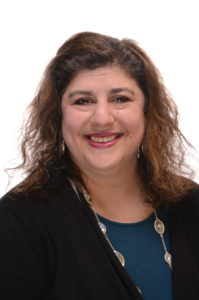By Jennifer Fiorillo
Mental Health

Jennifer Fiorillo
The ongoing shortage of behavioral health professionals has become one of the most insurmountable challenges for community-based nonprofit providers as they work to serve increasing mental health and substance use needs for those most vulnerable and underserved.
Waiting lists to access services because of increased demand has been a barrier for many over the last several years. Lack of adequate access has been compounded by the exodus of seasoned and dedicated clinicians who have chosen to go into private practice and work in settings like hospitals where they can be compensated at a higher rate than community-based nonprofits.
In the end, the shortage in the behavioral health workforce only hurts those who are seeking treatment and rely on the safety net of organizations that provide these vital services.
A survey conducted by the American Psychological Association in 2022 on the COVID-19 impact on practitioners found that 40 percent of psychologists were reporting a waiting list of more than 10 patients. Twenty percent reported an increase in demand in younger populations and people of color.
Timely access to care can be an issue for Medicaid enrollees because a number of private providers don’t accept it for payment. The pronounced workforce shortages experienced in the community-based setting can limit options for those on Medicaid even further if there aren’t enough clinicians to meet the increasing demand.
Progress toward properly addressing the behavioral health workforce shortage issue has been slow relative to the demand. A number of states have advocated for or adopted strategies that address the need to increase Medicaid rates so more providers would participate, develop policies to extend the workforce for behavioral health practitioners and loosen restrictions for in-person requirements such as approving the use of telehealth.
A newly passed law in Connecticut has allowed for the suspension of the associate licensing exam for master’s level social workers until Jan. 1, 2026. Until recently, this exam has been a requirement for obtaining the associate license to practice under the supervision of a licensed clinical social worker. It was found that the failure rate was high, thus preventing new social workers from entering the field to practice. It was also found that the failure rates disproportionately impacted social workers of color. This issue not only creates barriers to care and access but also limits opportunities to build up a diverse workforce to adequately address changing and increasing behavioral health needs.
The same bill also has a provision that gives a 120-day grace period for professional counselors and marriage and family therapists to submit paperwork for an associate license after graduation from their master’s program.
This is just an example of policy that was enacted to address the behavioral health workforce in Connecticut. Employers have also adopted strategies for recruitment to make clinical positions more appealing, such as sign-on incentives, flexible schedules and remote working options when appropriate.
There is still a substantial amount of work to be done around building the clinical workforce to support behavioral health needs in our communities. This will require ongoing commitment from policymakers and the provider community to advocate for changes that will reduce barriers to practice and make the field more appealing to new graduates.
Jennifer Fiorillo, MBA, MPH is the president and CEO of Bridges Healthcare in Milford, and may be reached at Jfiorillo@bridgesmilford.org.